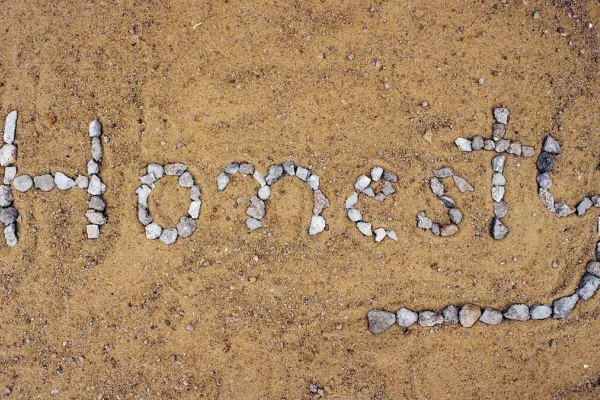 Details
Details
As brands look to create deeper connections with their audience and publishers search for new ways to generate revenue, native advertising as re-emerged as a tactic that both can take advantage of.
For those who aren’t familiar, native advertising, also referred to as sponsored content or advertorials, has taken on many forms over the years—from advertorials in newspapers in the 1940s to infomercials and paid programming spots on television. Today, native advertising is a content marketing tactic that typically involves publishing informational and educational articles and videos (with an underlying advertising message) in print or digital publications and blogs.
For publishers, native advertising allows them to generate revenue by not only lending advertisers their platform, but also offering their editorial expertise, brand reputation and audience. For brands, native advertising allows them to create valuable content and another touchpoint within in the buyer’s journey as they work toward being the best answer for their audience.
But despite native advertising’s long history and its growth as a content marketing tactic in today’s digital world, many brands and publishers are still weary to jump on board. Publishers worry about blurring the lines between commercial and editorial, as well as their making their audience feel deceived by poorly labeled ad content, while brands can struggle with understanding how to execute native ad content and wonder if it’s actually effective.
In its inaugural report, Native Advertising Trends 2016 – The Magazine Industry, the Native Advertising Institute and FIPP – the network for global media found that while native advertising can be challenging, it still holds some great opportunities. The organizations surveyed 140 magazine executives from 39 countries to understand what they think of native advertising, how they’re using it or plan to use it, and where the greatest threats and opportunities lie.
Below are some key findings from the report—as well as some tips from me—that could help brands and publishers overcome some of their skepticisms or concerns about native advertising, or help make your current native advertising services/efforts more effective:
#1 – Native advertising will grow.
According to the report, 52% of publishers already offer native advertising as a service and another 37% are likely or most likely to add the option in the future. In addition, those who currently offer the service expect that 30% of their overall advertising revenues will come from native advertising in 2018, which is up from 19% in 2015.
If higher revenues are anticipated and more service offerings are being considered, that leads me to believe that publishers and their customers must be seeing value and results with native advertising.
But native advertising may not be right for every brand or publication. Both should do some research and a little testing. Determining whether its a good fit will ultimately depend on who your customer/audience is and your business goals.
#2 – Native advertising adds value.
The goal for any piece of content should be to inform, engage and entertain your reader–and native advertising content is no different. The survey found that 74% of publishers believe that native advertising actually adds value for their readers and viewers.
The best way you can provide a valuable native content is to understand your audience. Publishers can provide excellent insight on who their readers are and brands can use that information to see if it fits with what they know about their target audience. If it’s a match, native content will be more compelling and valuable.
#3 – Native advertising does spark some complaints.
Native advertising is not every reader or viewers cup of tea, with 16% of publishers saying that they’ve received customer complaints because of native advertising.
The best way to avoid ruffling feathers is to clearly label native advertising as promoted or sponsored content, as well as ensuring that the content itself is of the highest editorial standards. Readers and viewers expect and deserve transparency, and giving it to them provides value and an honest connection with your brand.
As TopRank Marketing CEO Lee Odden once wrote: “Paid content only ‘works’ if the content meets similar standards to what’s normally published through editorial filters. ‘Salesly’ content published alongside high quality editorial will be ignored or worse, cause dissension against the publication and the brand that is doing the editorial advertising.”
#4 – Some publishers don’t label native advertising content.
More than half of publishers say they label native advertising pieces as “Sponsored Content” to differentiate it from editorial content, while others use other terms or change the actual look and feel of the content to set it apart.
However, 11% of publishers say they don’t label native advertising content at all.
As mentioned above, transparency is absolutely crucial to maintain the integrity of both the publication and the brand that’s advertising. Attempting to trick readers into believing that the content they’re reading is unbiased, journalistic content will almost certainly backfire on both parties.
#5 – Digital and printed articles, and video content perform the best.
Native advertising content can take on a variety of forms, but there are some that tend to be the most effective. According to the report, publishers see online articles (66%), video content (61%) and printed articles (50%) as the most effective types of native advertising content.
Again, use your audience knowledge to choose the type of native content that will be the most effective.
#6 – Telling real stories is key.
Native advertising is meant to seamlessly integrate with other editorial content, which means storytelling is an absolute must. Unfortunately, many publishers find that convincing their advertisers to tell real stories in their native content is difficult, with 37% saying it’s one of their biggest native advertising challenges.
Using overtly promotional language is not how you tell a story—or get your audience to connect with your brand. Telling real stories is a great way to engage with your brand in an authentic way, while also providing them with information and that entertainment factor.
Download the entire Native Advertising Trends 2016 – The Magazine Industry report here.
Editor's note: This piece was slightly edited from the original for NAI. The original article appeared on TopRankBlog and was written by Caitlin Burgess


